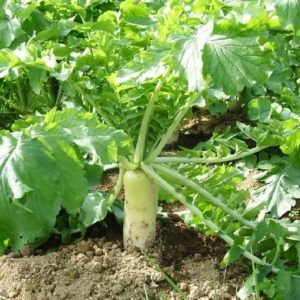Growing your own fruits and vegetables is rewarding. Growing heirloom varieties is even more so. Of course, growing our own saves us money and allows us to know exactly what goes into our food and, therefore, our bodies. But what’s the fun in growing conventional varieties anyone can go buy in the store when there are countless heirloom varieties with unique tastes, colors, textures and nuances?
The truth is, the veggies that are available at our local supermarkets are grown for one key attribute: shipping potential. If it can be shipped thousands of miles without spoiling, it will be grown and sold to grocery stores nation—or even worldwide. So if the main concern for commercial veggie growers is how easily the variety ships, what is being compromised?
Flavor. Texture. Sweetness. Just to name a few. Simply put, when vegetables used to be eaten closer to the source of where they were grown, farmers could focus more on how a variety tastes or appeared, rather than how easy it was to ship. These heirloom varieties farmers used to grow became popular because they tasted good and that’s just one very good reason to grow heirlooms in your garden. Why not get started growing heirlooms this fall? We’ve got 5 great varieties to try:
Red Acre Cabbage

This stunning red cabbage variety is as tasty as it is beautiful. With heads up to 4 pounds, you’ll be able to enjoy your bounty in countless preparations. While it is a cool season crop, it can be grown in any hardiness zone! Cabbage, especially the Red Acre variety, tends to be a slower grower, with expected maturation coming between seventy-five and ninety days, so be sure to keep an eye on overnight temperatures and frost warnings. The cooler temperatures of growing Red Acre cabbage during the fall season will provide you with a stunning red/purple head that will add an impressive splash of color to slaws, salads, and soups.
Japanese Minowase Daikon Radish
This heirloom variety of radish offers a refreshing, mild and delicious flavor. Originally from Japan (daikon means radish in Japanese), it is used in a variety of dishes like salads and pickled offerings, as well as used as a garnish with decadent sashimi platters. They can mature in less than two months and also have excellent keeping qualities. As your Daikon radishes being to sprout, be sure to thin out the seedlings to leave two to three inches between each so they can grow to their maximum potential, often up to 24 inches long!

Detroit Dark Red Beets
You simply can’t beat a good beet. If Jack Kerouac was the “King of the Beats”, then Detroit Dark Red is surely the “King of the Beets”. The deep, rich color paired with the excellent flavor make this a must grow variety if you’re a fan of beets. And don’t forget—the greens make a great meal themselves! In most southern states, the Detroit Dark Red beet can be grown through the fall and into the winter months, while in states that will experience a hard freeze of the soil, they’ll need to wait until soil can be worked to be sown into your garden. Plan to give your beets about sixty five days to be ready for harvest, but can be consumed earlier depending how you’ll be cooking or preserving them.
Georgia Southern Collards
Every family in the south loves their greens. It’s a staple vegetable that grows well in cool weather. The Georgia Southern variety provides an extended crop by being slow bolting, giving you more time to enjoy this delicious green. This variety in particular happens to be an absolutely beautiful specimen, with thick, blue-green leaves. Collards of all varieties are a late summer garden favorite, as they are very cold hardy and will often be one of the few vegetables in the garden to continue to grow through a frost or snow. In most parts of the country, gardeners will leave their collard greens in the ground until the first frost arrives, as the cold will bring out the true flavor of the greens.

Cosmic Purple Carrots
You don’t need to be a space fan to appreciate this stellar variety of heirloom carrot. Named after its unique coloration, you’ll love serving these beautiful carrots to kids or guests. A deep, purple exterior masks an orange interior, giving a “cosmic” appearance when sliced. This variety is sweet and an absolute pleasure to eat. Carrots absolutely love cold weather, and their taste is enhanced greatly when they remain in your garden during multiple frost periods. Let them go as long as you can into the winter, and you’ll be rewarded with carrots packed with “out of this world” flavor!
Growing heirlooms is about more than flavor, texture and beauty. It allows you to carry on an incredible tradition of genetic variety to share with generations to come. If you’ve never had the pleasure of enjoying an heirloom, we challenge you to add some to your fall garden. More likely than not, you’ll call it the best carrot, beet or collard you’ve ever tasted.